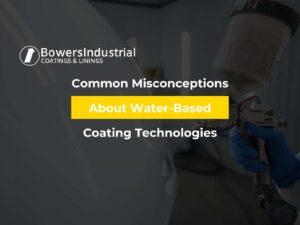When it comes to flooring options, concrete has gained immense popularity in recent years, not only for outdoor spaces but also for interior use. Both homeowners and companies prefer it because of its strength, adaptability and stylish appearance. However, to ensure that your concrete floor maintains its charm and resilience over time, it’s essential to ask the question: Can you seal a concrete floor? In this guide, we will delve into the world of concrete floor sealing, discussing its importance, benefits, types of sealers and the steps involved in the process.
The Importance of Sealing a Concrete Floor
Concrete floors are undoubtedly strong and long-lasting, but they are not invulnerable. Without proper sealing, concrete can be open to various issues, including:
- Stains: Spills and stains can easily permeate unsealed concrete, leaving unsightly marks that can be challenging to remove, reducing the floor’s beauty.
- Moisture Damage: Unsealed concrete can absorb moisture because it is porous by nature. This absorption over time can cause concerns including the development of mold growth, efflorescence (the white, powdery substance that grows on concrete surfaces) and in extreme circumstances, structural damage.
- Dust and Dirt Accumulation: The absorbent nature of unsealed concrete makes it a magnet for dust and dirt, leading to a continuous struggle to keep the floor clean and maintain its spotless appearance.
- Abrasion: High-traffic areas on unsealed concrete are prone to wear and tear, resulting in a rough and uneven surface, further diminishing the floor’s appeal.
- Chemical Exposure: Chemicals such as oils, acids and solvents can cause permanent damage to unsealed concrete surfaces, impacting both design and structural integrity.
Sealing your concrete floor emerges as the key solution to prevent these problems, ensuring the longevity and performance of your valuable flooring investment.
Types of Concrete Sealers
The world of concrete sealers is diverse, with a variety of options each possessing unique characteristics and advantages:
- Penetrating Sealers: These sealers penetrate the concrete deeply and go beyond the surface to form a chemical barrier that stops harmful substances and water. They are the preferred option for protecting against moisture and the negative consequences of freeze-thaw cycles.
- Film-Forming Sealers: Film-forming sealers operate by creating a protective layer on the surface of the concrete. Two primary categories within this type are acrylic and epoxy sealers. Acrylic sealers enhance the appearance of decorative concrete while epoxy sealers provide exceptional durability and chemical resistance, making them suitable for industrial settings.
- Polyurethane Sealers: These are frequently chosen as commercial concrete floor sealers, also useful for industrial applications due to their high resistance to abrasion and chemicals. They offer versatility in application because they are available in water and solvent-based formulations.
- Silicate Sealers: In a chemical reaction with the concrete, silicate sealants create a solid crystalline structure that not only strengthens the surface but also reduces absorption. Specifically, these sealers work well on older, more porous concrete substrates.
- Silicone Sealers: Silicone sealers excel in providing exceptional water repellency, making them ideal for outdoor applications where exposure to moisture is a concern. Furthermore, their UV resistance ensures longevity for exposed concrete surfaces.
The Process of Sealing a Concrete Floor
Sealing a concrete floor may initially seem like a difficult task but it can be relatively straightforward when you follow these steps:
- Prepare the Surface: Cleaning the concrete thoroughly at the beginning of the process will ensure that any dust, dirt or stains that might interfere with the sealing process are removed. If there are any surface flaws or cracks, fix them as well for an uneven and smooth finish.
- Choose the Right Sealer: The key to successful sealing lies in selecting the appropriate sealer based on your specific requirements and the type of concrete surface you are dealing with.
- Apply the Sealer: Follow the manufacturer’s detailed instructions for applying the sealer. This may entail brushing, rolling or spraying the sealer onto the concrete surface, ensuring a perfect and consistent protection.
- Allow Drying Time: Patience is important here; allow the sealer to dry completely before allowing people to walk or replacing furniture on the floor. Drying times may vary based on the type of sealer utilized, so consult the product guidelines for accurate timeframes.
- Maintain the Sealed Surface: After sealing, it’s crucial to establish a regular cleaning and maintenance routine to preserve the longevity and performance of your concrete floor. This will ensure it continues to shine, looking good and functionally.





